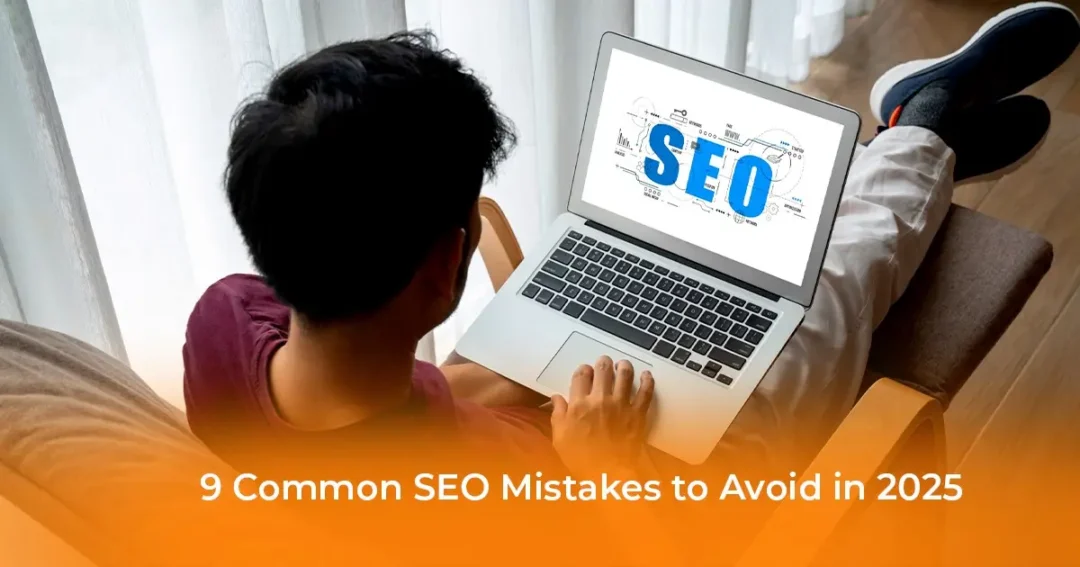Introduction to SEO in 2025
Imagine this: You’ve spent weeks building your website, writing content, optimizing keywords—and still, your traffic is flatlining. You’re not alone. Every year, thousands of businesses pour effort into SEO strategies that fail—not because SEO is broken, but because they’re unknowingly making the same common SEO mistakes.
Search engine algorithms have evolved rapidly, and what worked two years ago can now tank your rankings. In 2025, user experience, technical accuracy, and content intent matter more than ever. This guide breaks down the most common SEO mistakes to avoid if you want your business to stay competitive and visible online.
Let’s explore the top SEO mistakes that still hold brands back—and what you can do instead.
1. Duplicate Content
Why it’s a problem:
Search engines aim to provide users with the most relevant, original content. If your site has pages with similar or identical content, you confuse Google, which could lead to both pages getting deprioritized.
Example:
A SaaS company copies product descriptions from its main service page onto multiple landing pages. As a result, none of those pages rank well because Google treats them as redundant.
Fix:
Use canonical tags, merge similar content, and ensure each page has unique, value-driven information.
2. Lack of Mobile Optimization
Why it’s a problem:
Mobile-first indexing means Google prioritizes the mobile version of your website. If it’s clunky, slow, or unresponsive, your rankings will suffer.
Example:
A local retailer’s site looks great on desktop but crashes on mobile. Users bounce quickly, leading to higher bounce rates and lost sales.
Fix:
Use responsive design, test your site regularly on different mobile devices, and fix usability issues with Google’s Mobile-Friendly Test tool.
3. Slow Site Speed
Why it’s a problem:
Page speed is a core ranking factor. A site that takes more than 3 seconds to load can lose nearly half its visitors.
Example:
An e-commerce brand adds too many high-resolution images without compression. This increases load time, pushing potential customers to faster competitors.
Fix:
Compress images, reduce server response time, and use caching plugins or CDNs to speed up delivery.
4. Missed Linking Opportunities
Why it’s a problem:
Internal and external links are vital for SEO. Without them, search engines struggle to crawl your content effectively, and users lack navigation options.
Example:
A blog post ranks well but doesn’t link to related service pages. This limits authority distribution and user engagement.
Fix:
Add relevant internal links to guide users through your site. Reach out for backlinks where relevant to improve domain authority.
5. Generic Anchor Text
Why it’s a problem:
Anchor text should give users (and search engines) context about the page it links to. Using phrases like “click here” or “read more” doesn’t help.
Example:
A legal firm links to its privacy policy and case studies using vague anchor text. Google can’t connect relevance, and it affects keyword alignment.
Fix:
Use descriptive anchor text with relevant keywords (e.g., “data privacy policy” or “personal injury case study”).
6. Lack of Local SEO
Why it’s a problem:
For brick-and-mortar businesses, ignoring local search means missing out on traffic with strong intent to convert.
Example:
A dentist in Mumbai doesn’t optimize for “dentist near me” or claim their Google My Business profile. They miss dozens of high-converting leads each week.
Fix:
Claim and optimize your GMB listing, build local citations, and use localized keywords in content and meta tags.
7. Forgetting to Add Alt Text
Why it’s a problem:
Alt text helps Google understand images and is crucial for accessibility. Without it, your images don’t contribute to SEO.
Example:
A fashion blog features high-quality product images but doesn’t add descriptive alt tags. Image search traffic is non-existent.
Fix:
Add relevant, keyword-optimized alt text to every image. Describe the image clearly while keeping it concise.
8. Lacking or Incorrect Schema Markup
Why it’s a problem:
Schema helps search engines understand your content better. Without it, you lose chances to appear in rich results (like star ratings, FAQs, etc.).
Example:
A recipe site doesn’t implement a Recipe schema. Its content looks plain on search results, while competitors show ratings, prep times, and images.
Fix:
Use tools like Google’s Structured Data Markup Helper or plugins like Rank Math/Yoast to add schema to pages.
9. Focusing Only on High-Competition Keywords
Why it’s a problem:
Going after the most searched keywords sounds smart—until you realize you’re competing against massive brands with million-dollar SEO budgets.
Example:
A startup targeting “CRM software” can’t outrank HubSpot or Salesforce. Their content sits on page 10 with zero visibility.
Fix:
Start with long-tail keywords like “CRM software for small marketing teams.” Less competition, more relevance, and higher conversion potential.
Final Thoughts
Avoiding these common SEO mistakes in 2025 can make the difference between being buried in search results or ranking on page one. Each mistake—whether it’s ignoring mobile users, skipping schema markup, or duplicating content—adds friction between your site and its organic visibility.
Whether you’re an SEO executive or part of a growing brand’s marketing team, take action today. Run an SEO audit. Fix what’s broken. And most importantly—don’t let simple errors cost you hard-earned traffic.
Want expert help to solve your SEO issues and grow your search visibility?
Connect with DigiChefs today. We help brands fix their SEO problems and scale sustainably. Let’s get your traffic moving in the right direction.


